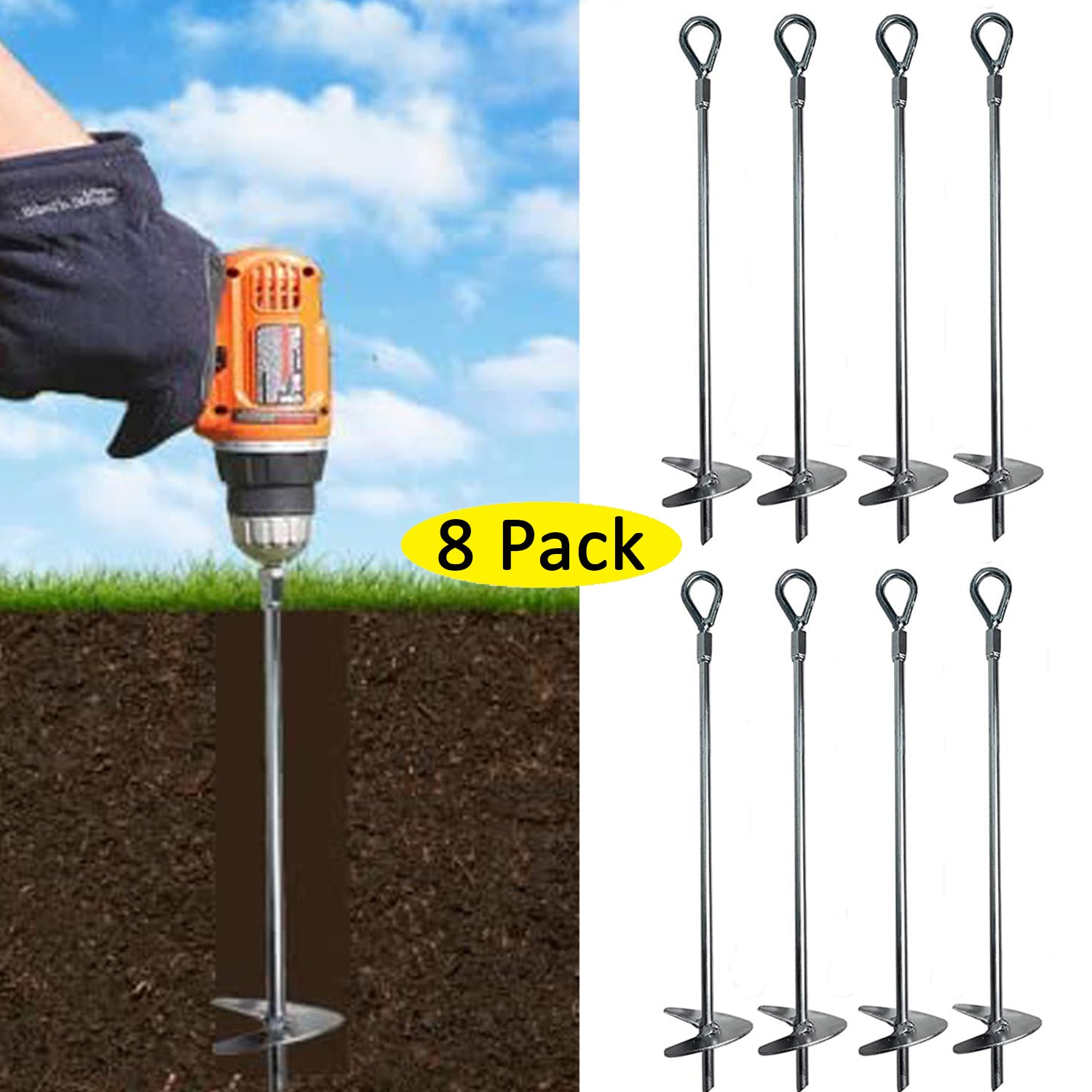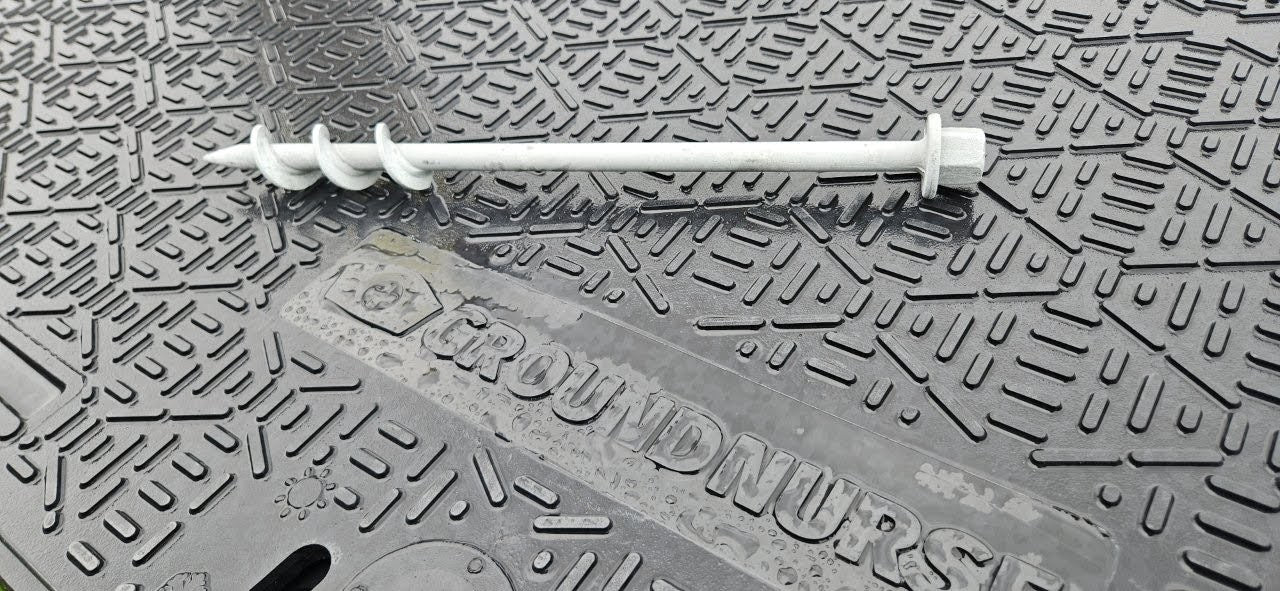Exactly How Durable Earth Anchors Work: A Comprehensive Guide to Soil Anchoring Solutions
Heavy-duty Earth supports play an important function in offering stability and assistance in numerous building applications. By installing deeply right into the ground, they resist side and vertical pressures effectively. Various sorts of anchors cater to various dirt conditions, making them functional. Understanding their mechanics and setup techniques is essential for optimizing performance. What variables affect their efficiency, and how do they contrast to conventional methods? The solutions may shock you.
Comprehending Heavy-Duty Earth Anchors
Sturdy Earth anchors work as essential parts in different construction and landscaping jobs, providing security and support in tough soil problems. These supports operate by being embedded right into the ground, where they resist upright and lateral forces. Their style permits for protected accessory to structures, ensuring they continue to be secured versus dirt movement or outside loads.The performance of sturdy Earth anchors greatly depends upon the type of dirt and the anchor's installation depth. Proper setup strategies are critical, as they figure out the anchor's holding capability. Ecological factors, such as dampness and freeze-thaw cycles, can also impact performance.These anchors are regularly utilized in applications ranging from protecting fences and preserving wall surfaces to stabilizing momentary structures throughout damaging weather. Understanding the principles behind heavy-duty Earth anchors is essential for experts seeking to improve the longevity and safety and security of their projects.
Kinds Of Heavy-Duty Earth Anchors
Various sorts of sturdy Earth anchors are made to fulfill specific requirements based on dirt problems and task needs. Helical anchors, featuring screw-like blades, work in softer dirts, supplying high lots abilities and easy setup. Driven anchors, which are hammered into the ground, are suitable for rocky terrains and offer immediate tons assistance. Tie-back anchors are frequently utilized in preserving wall surface applications, enabling lateral support by securing right into the ground at an angle. An additional type is the cast-in-place support, suitable for concrete applications, as they are integrated right into foundations for boosted stability. Soil screw supports are versatile alternatives that can be utilized in numerous soil types, providing trusted tension and compression capacities. Each kind serves distinctive applications, guaranteeing security and security in building and landscaping projects. Recognizing these options permits informed decisions in selecting the suitable Earth securing remedy.
The Mechanics of Dirt Anchoring

Comprehending the technicians of dirt anchoring requires an assessment of various sorts of Earth anchors and their installation strategies. Each anchor kind offers one-of-a-kind features that influence its effectiveness in different soil problems. Correct installment approaches are crucial for making the most of the securing system's security and efficiency.
Kinds of Earth Anchors
Earth supports, important elements in dirt anchoring systems, come in numerous types, each made for specific applications and soil conditions. One of the most common types consist of screw supports, which are turned right into the ground, providing solid side resistance. Helical anchors feature blades that enable for effective installment in various soil types, making them ideal for both short-term and long-term applications. Driven anchors, commonly made from steel, are inculcated the dirt and work in dense or rocky environments. Auger anchors utilize a helical design to facilitate installation in softer soils. Plate anchors consist of a level plate buried horizontally, distributing lots over a larger location, perfect for applications requiring high load abilities in cohesive soils.
Installation Strategies Clarified
Correct installment techniques are vital for the efficiency of soil anchoring systems. The procedure typically starts with website analysis, confirming the picked location can support the anchor's load. After establishing the correct anchor kind, proper hole deepness and angle need to be established. The installment involves driving the anchor right into the ground utilizing specialized tools, such as hands-on or hydraulic chauffeurs, to achieve best embedment. Post-installation, tensioning the support is vital to guarantee stability; this is frequently verified with tons screening. In addition, bordering soil problems need to be kept an eye on to stop displacement. Adhering to these strategies not just enhances the anchor's performance however additionally prolongs its life expectancy, providing trustworthy support for different applications.
Applications of Heavy-Duty Earth Anchors
While durable Earth supports are often related to building and construction and landscape design, their adaptability reaches a variety of applications throughout different sectors. In civil engineering, they give necessary assistance get redirected here for keeping walls, making sure security in areas susceptible to soil erosion. The aquatic sector utilizes these supports for safeguarding docks and marinas, stopping motion triggered by tides and currents. Additionally, in the telecom market, heavy-duty Earth anchors are considerable for supporting cell towers and other tall structures against wind pressures. Agricultural applications likewise benefit, as these anchors can safeguard frameworks like greenhouses and livestock fence, guaranteeing they withstand harsh climate conditions. Additionally, in eco-friendly energy tasks, such as wind ranches, Earth anchors play a crucial function in protecting wind turbine structures, improving overall safety and security and efficiency. This wide series of applications highlights the versatility and reliability of sturdy Earth anchors across numerous areas.
Benefits Over Typical Anchoring Techniques
Although traditional anchoring techniques have long been trusted for stability, heavy-duty Earth supports supply considerable advantages that improve performance and efficiency. One significant advantage is their superior load-bearing capacity, which allows them to withstand greater forces without failure. This stamina makes them optimal for demanding applications, such as in construction and utility installations.Additionally, sturdy Earth anchors are designed for much deeper installation, giving greater stability in different dirt conditions, consisting of sandy or loosened dirts. Their resistance to deterioration and ecological elements guarantees a much longer lifespan and minimized maintenance costs compared to standard methods.Moreover, these anchors can be installed with marginal disturbance to the surrounding area, preserving the stability of the landscape. Overall, durable Earth anchors present a effective and reliable remedy for securing needs, exceeding the limitations typically associated with standard anchoring methods.
Installment Process and Ideal Practices
The installment procedure for soil securing remedies starts with thorough preparation and website evaluation to guarantee peak efficiency. Following this, a detailed installation overview gives clear directions for effective execution (Manta Ray anchors). Following these finest techniques is important for attaining resilient and reputable anchoring outcomes
Preparation and Website Evaluation
Effective prep work and extensive site examination are crucial actions in the installation of soil anchoring options. Prior to setup, the soil kind need to be examined to establish its bearing capability and suitability for securing. Performing a geotechnical study can supply vital information regarding dirt structure, wetness degrees, and potential ground motion. Furthermore, determining existing structures, greenery, and utilities is vital to avoid interference throughout installment. The area should be removed of particles and challenges to assure secure access for devices. Climate condition must also be kept an eye on, as unfavorable problems can impact both safety and installation efficacy. By thoroughly preparing the site and reviewing all relevant variables, the likelihood of effective support efficiency is significantly raised.
Step-by-Step Installment Overview
An extensive setup procedure is essential for attaining excellent efficiency of soil anchoring services. The installation starts with selecting the suitable anchor kind and assuring the site is free from particles. Next, proper opening positioning is established based upon tons needs. As soon as the area is established, holes are drilled to the defined depth and size making use of the correct devices. The anchor is then put right into the hole, making certain it is lined up properly. After securing the support, soil is backfilled and compacted to improve stability. It is necessary to comply with maker standards throughout the process. A post-installation assessment confirms that the supports are effectively positioned and functioning as planned, offering dependable assistance for the intended application.

Upkeep and Examination of Earth Anchors
Routine browse around this site upkeep and evaluation of Earth anchors are essential for making certain long-term efficiency and stability. Routine checks permit the very early discovery of problems such as corrosion, loosening up, or dirt activity. Examiners ought to look for indications of rust or destruction on the support components, especially at the connection factors. Additionally, the bordering soil ought to be evaluated for disintegration or modifications in moisture web content, which can impact anchor effectiveness.It is suggested to establish a routine examination routine, preferably at least once a year, relying on environmental problems. During inspections, all noticeable components must be cleansed to eliminate dust or particles that might conceal possible problems. Any type of indicators of distress, such as tilting structures or uncommon settling, must trigger why not try here immediate evaluation. Appropriate documents of assessments can assist in monitoring anchor performance in time and facilitate timely maintenance activities, making certain the supports remain practical and reliable.
Frequently Asked Concerns
What Products Are Heavy-Duty Earth Anchors Commonly Made From?
Sturdy Earth anchors are commonly created from sturdy materials such as galvanized steel or stainless steel, guaranteeing toughness and resistance to rust. These products supply lasting assistance and stability in numerous dirt conditions and applications.
Exactly How Do Soil Conditions Impact Anchor Efficiency?
Soil problems considerably influence support performance. Factors such as dirt type, wetness material, and compaction impact the support's hold and security, with natural soils typically providing much better resistance than loosened or sandy dirts, affecting total efficiency.
Can Heavy-Duty Earth Anchors Be Recycled After Removal?
Durable Earth supports can be recycled after elimination, supplied they are inspected for damage and wear. Appropriate cleansing and upkeep improve their long life, guaranteeing reliable efficiency in subsequent setups when problems enable risk-free reinstallation.
What Are the Ecological Influences of Using Earth Anchors?
The environmental effects of utilizing Earth supports consist of potential soil disruption, interruption of regional environments, and feasible contamination of groundwater. If utilized properly, their advantages typically exceed these problems, advertising stability in numerous applications.
Just how Do I Select the Right Anchor for My Job?

Comments on “Essential Knowledge for Using soil anchoring solutions for Site Reinforcement”